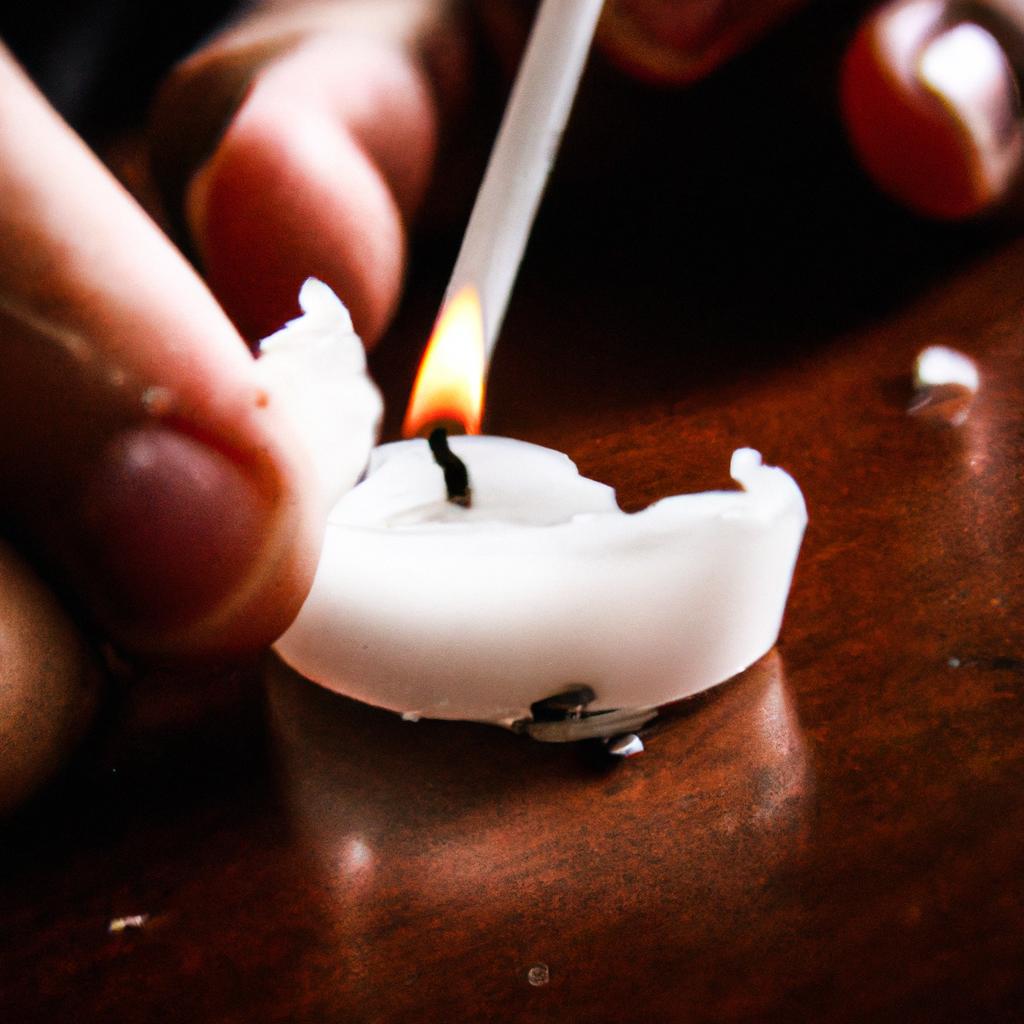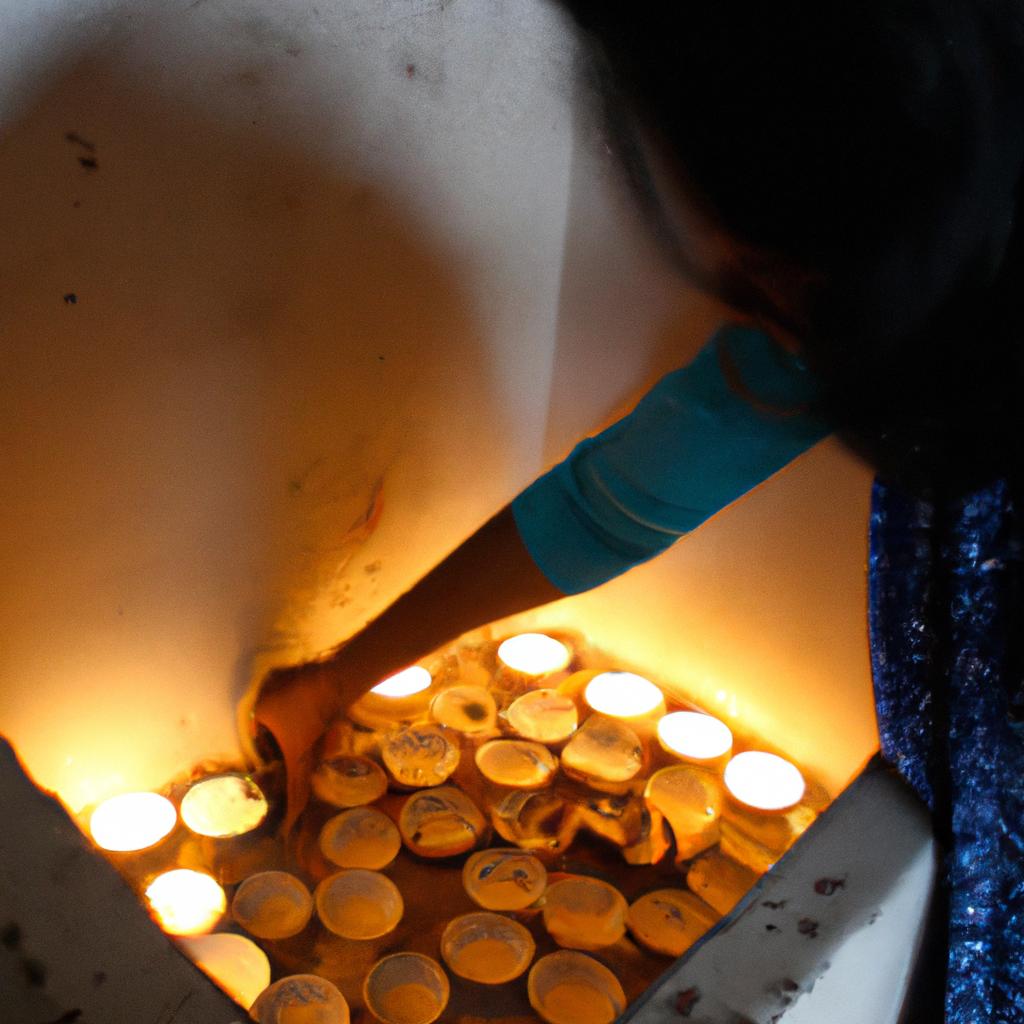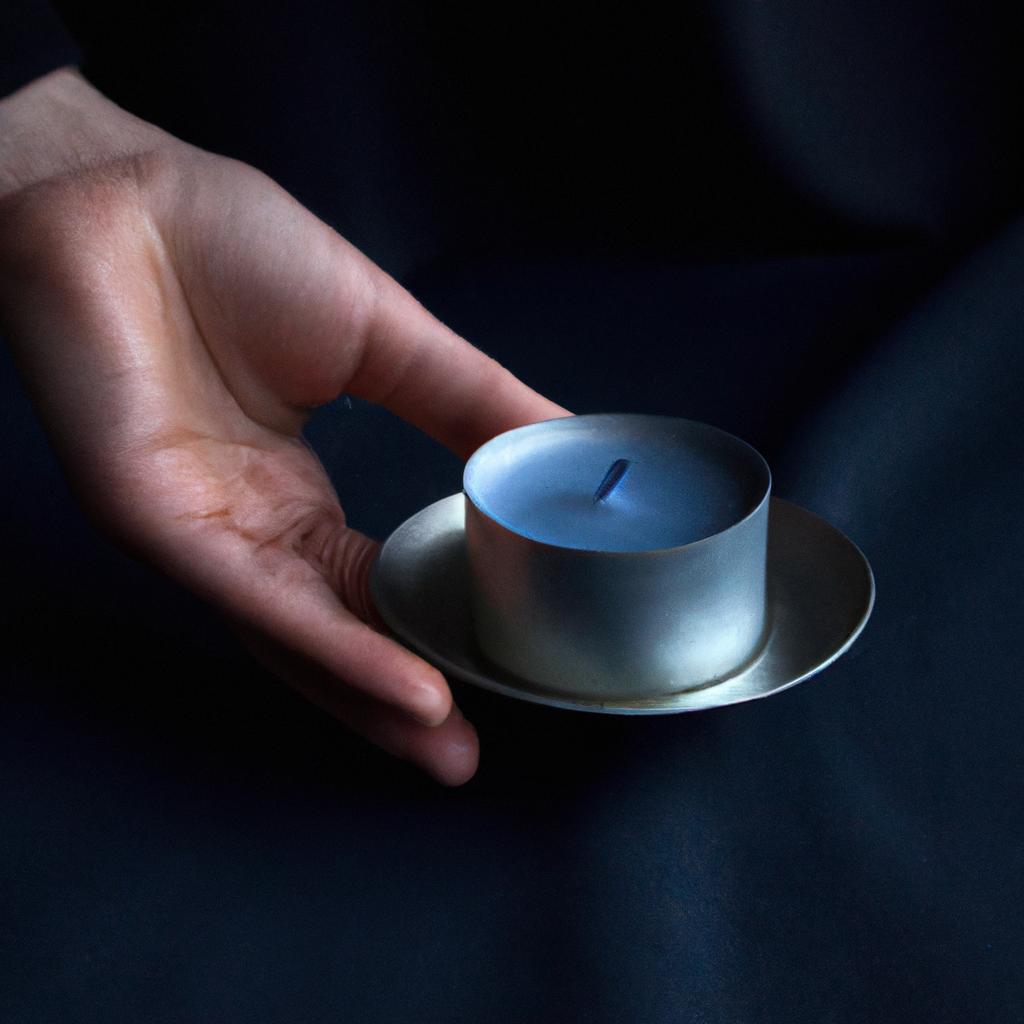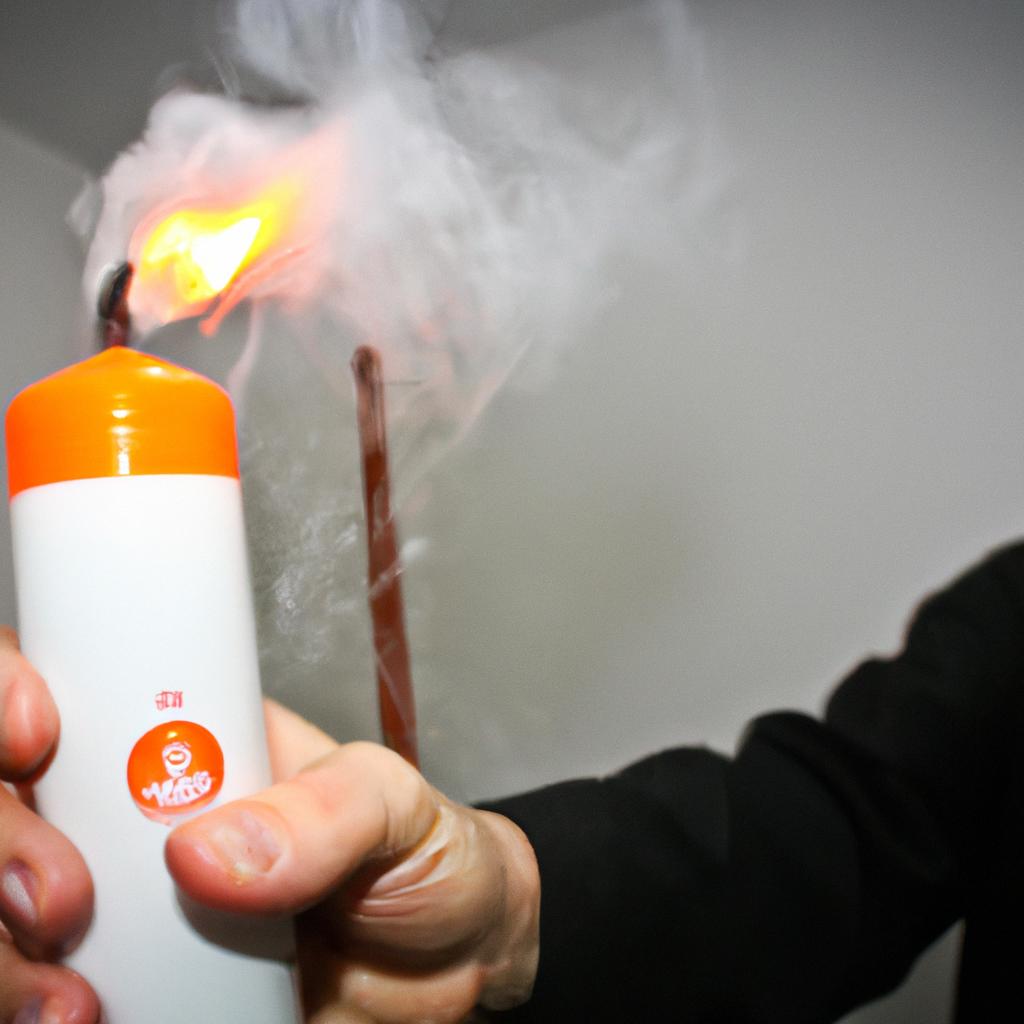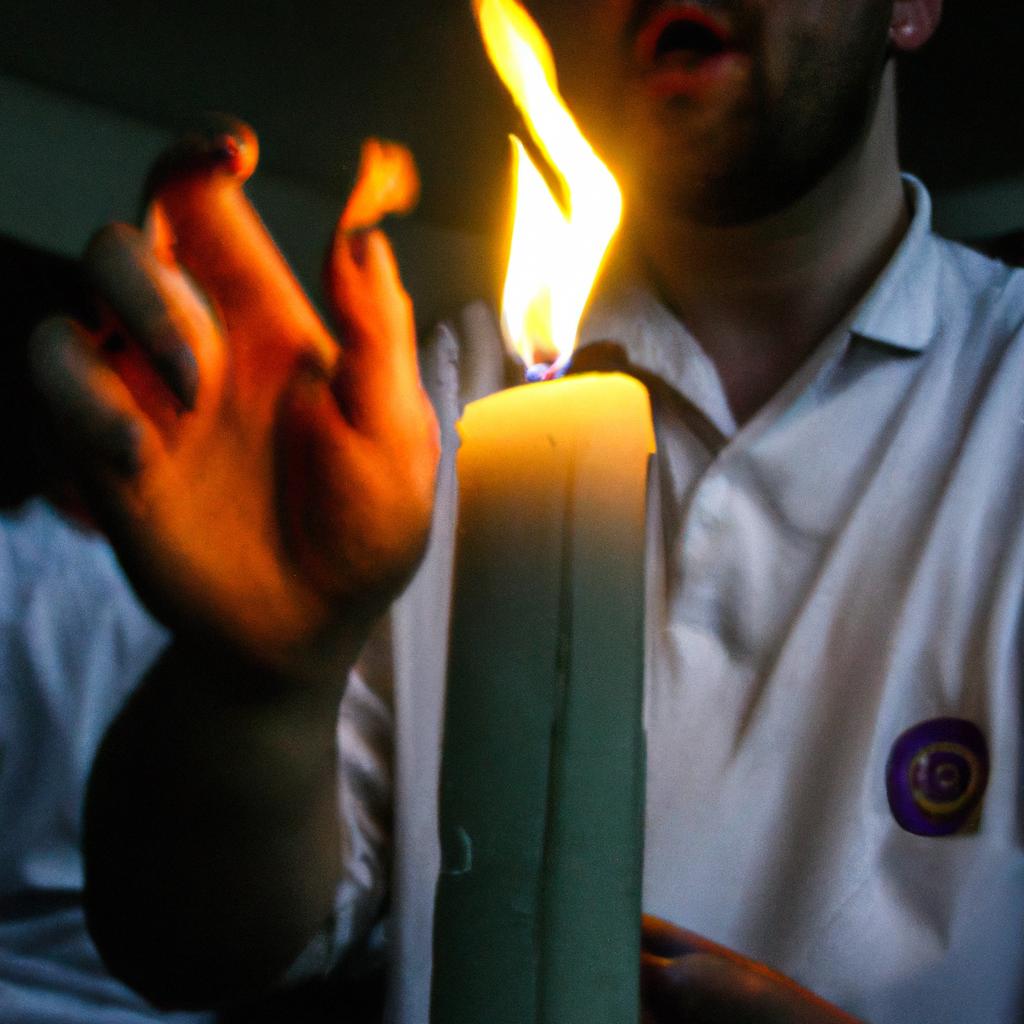Candle Making: General Safety Tips
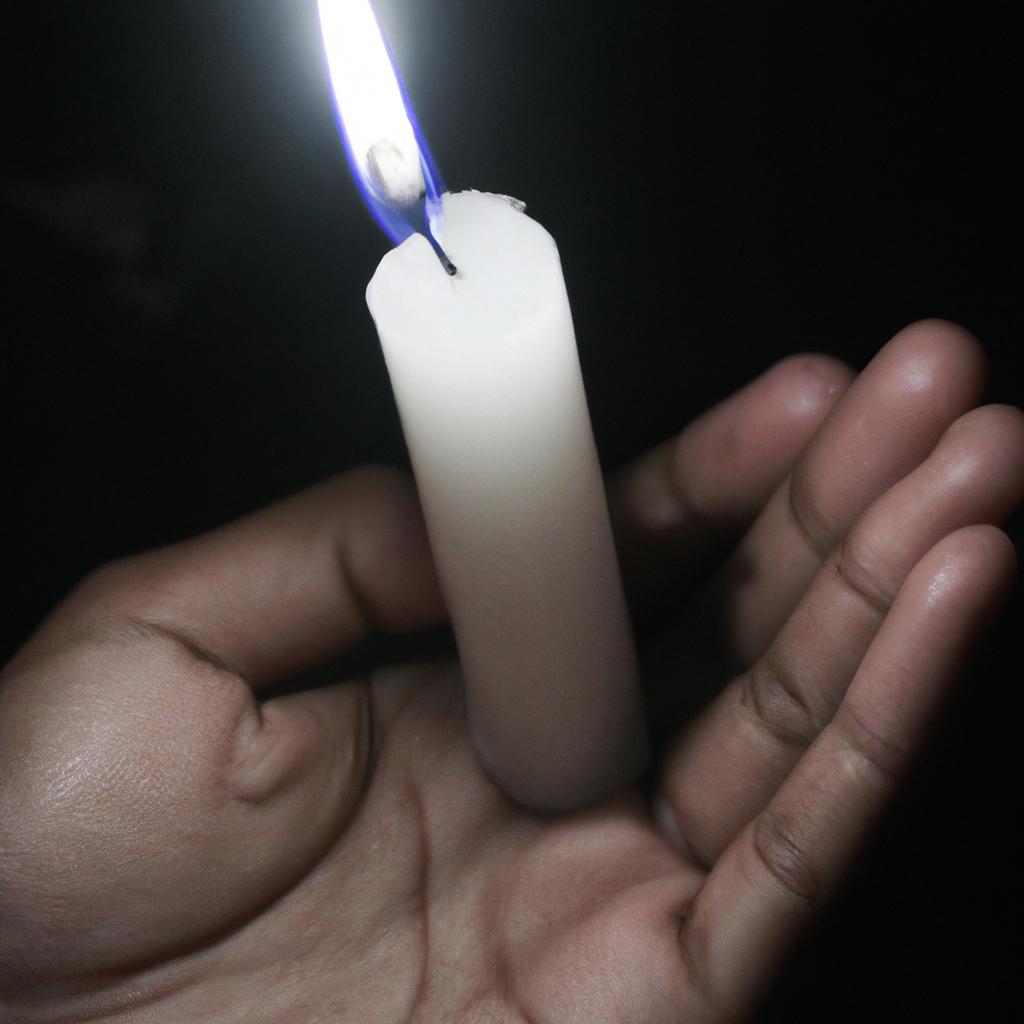
Candle making is a popular hobby enjoyed by many individuals. However, it is essential to prioritize safety when engaging in this activity due to the potential risks involved. One example that highlights the importance of adhering to general safety tips during candle making is the case of Mrs. Johnson, an avid candle maker who experienced a fire accident in her home. This unfortunate incident serves as a reminder that even seemingly harmless activities like candle making can have serious consequences if proper precautions are not taken.
In this article, we will discuss some general safety tips that every candle maker should follow to ensure their well-being and minimize the risk of accidents. By adopting these guidelines, enthusiasts can continue enjoying their craft while maintaining a safe environment for themselves and those around them. It is important to recognize that although candles may seem innocuous, they involve high temperatures and open flames, which pose inherent dangers if mishandled or neglected. Therefore, understanding and implementing appropriate safety measures is crucial for anyone venturing into the world of candle making.
Choosing the right workspace
Imagine a scenario where Sarah, an enthusiastic candle maker, sets up her workspace in a cluttered and confined area of her home. As she begins melting wax on her stove, several accidents occur due to insufficient space and improper ventilation. This example highlights the importance of choosing the right workspace when engaging in candle making activities.
To ensure safety during the candle making process, it is essential to select an appropriate location that meets certain criteria. Firstly, consider designating a dedicated area for this craft that is well-ventilated and away from flammable materials or open flames. Adequate ventilation helps dissipate any potentially harmful fumes released during the heating and pouring stages of candle making.
Here are some key elements to keep in mind while setting up your workspace:
- Clear surroundings: Remove any unnecessary items or combustible materials from your workspace to prevent accidental fires.
- Proper lighting: Make sure you have sufficient lighting to see clearly throughout the entire process.
- Adequate counter space: Ensure there is enough room for all your supplies and equipment without feeling cramped or cluttered.
- Ventilation system: Consider implementing a proper exhaust system or opening windows to allow fresh air circulation.
| Hazards | Risks | Precautions | |
|---|---|---|---|
| 1 | Fire | Burns | Keep fire extinguisher nearby |
| 2 | Toxic fumes | Respiratory problems | Use masks or respirators |
| 3 | Overheated containers | Burns | Utilize heat-resistant gloves |
| 4 | Lack of ventilation | Health issues | Open windows or use fans for airflow |
By adhering to these guidelines, you can create a safe environment conducive to successful candle making endeavors. With careful consideration given to selecting the right workspace, potential hazards can be minimized, ensuring a more enjoyable and secure candle making experience.
Transitioning into the subsequent section about “Using heat-resistant containers,” it is important to understand how container selection plays a crucial role in maintaining safety during the candle making process.
Using heat-resistant containers
Having established the importance of selecting a suitable workspace for candle making, it is now crucial to understand how to use heat-resistant containers effectively. By employing these safety measures, you can further minimize the risk of accidents and ensure a smooth candle-making process.
Using heat-resistant containers:
To maintain safety while handling hot wax, it is essential to utilize appropriate containers that are designed to withstand high temperatures. Heat-resistant containers not only protect you from burns but also prevent any potential damage or breakage due to extreme temperature fluctuations. For instance, imagine using a glass container with poor thermal resistance. As soon as hot wax is poured into it, the sudden change in temperature could cause the glass to crack or shatter, leading to hazardous situations.
It is advisable to choose containers made of materials such as metal or thick glass specifically designed for candle making purposes. These materials have higher melting points and can tolerate significant shifts in temperature without compromising their structural integrity. When selecting your containers, keep in mind that they should be deep enough to allow for stable placement of wicks and easy pouring of melted wax.
When working with heat-resistant containers, consider incorporating the following safety guidelines:
- Always handle hot containers with oven mitts or heat-proof gloves.
- Place each container on a sturdy surface away from flammable objects.
- Avoid over-filling the container since this may lead to spillage during cooling.
- Allow sufficient time for the molten wax to cool before moving or touching the container.
By adhering strictly to these precautions when choosing and using heat-resistant containers, you can significantly reduce hazards associated with heated wax and create candles safely.
Safety Tips:
Below are some additional general safety tips regarding heat-resistant containers:
- Keep a fire extinguisher nearby in case of emergencies.
- Ensure proper ventilation in your workspace by opening windows or using fans.
- Store unused candles and supplies in a cool, dry place.
- Regularly inspect your containers for any signs of damage or wear.
Table: Types of Heat-Resistant Containers
| Material | Melting Point (°F) | Advantages |
|---|---|---|
| Metal | 2000 | Excellent heat conductivity |
| Thick Glass | 1000 | Transparent and visually appealing |
| Ceramic | 3000 | Highly durable and long-lasting |
| Silicone | 600 | Flexible and lightweight |
With proper knowledge on choosing suitable workspaces and using heat-resistant containers, we can now delve into understanding how to handle hot wax with caution. By following these safety guidelines, you can further ensure a secure candle-making process.
Handling hot wax with caution
Having discussed the importance of using heat-resistant containers in candle making, it is equally crucial to handle hot wax with caution. Failure to do so can result in accidents and injuries. In this section, we will explore general safety tips for handling hot wax effectively.
Paragraph 1:
To illustrate the significance of cautiousness when dealing with hot wax, consider a hypothetical scenario where an inexperienced individual attempts to pour melted wax into a glass container without proper protection. Due to the high temperature of the wax, the glass shatters upon contact, causing severe burns and potential cuts from sharp fragments. This example serves as a reminder that mishandling hot wax can have disastrous consequences.
Paragraph 2:
To ensure your safety while working with hot wax, here are some essential guidelines you should follow:
- Always wear protective gear such as gloves and goggles to shield yourself from accidental spills or splashes.
- Use long-handled utensils like spoons or ladles specifically designed for candle making. This helps maintain a safe distance between your hands and the hot wax.
- Avoid distractions during the process; focus solely on handling the heated materials.
- Keep flammable objects away from your work area to minimize fire hazards.
Table: Common Safety Guidelines for Handling Hot Wax
| Safety Measure | Importance |
|---|---|
| Wear protective gear | Shields against burns |
| Use appropriate utensils | Maintains safe distance |
| Minimize distractions | Ensures focused attention |
| Remove flammable objects | Reduces risk of fires |
Paragraph 3:
By adhering to these safety measures, you significantly reduce the chances of accidents occurring during candle making. However, ensuring proper ventilation is another vital aspect that cannot be overlooked. Effective ventilation prevents the accumulation of fumes and reduces exposure to harmful substances emitted during the melting process.
With this understanding of how handling hot wax safely is crucial, let us now delve into the next section on ensuring proper ventilation.
Ensuring proper ventilation
Having discussed the importance of handling hot wax with caution, it is now crucial to address another vital aspect of candle making – ensuring proper ventilation. Inadequate airflow can lead to a buildup of potentially harmful fumes and increase the risk of respiratory issues or even fires. By prioritizing adequate ventilation in your workspace, you can create a safer environment for your candle-making endeavors.
Example:
Consider this hypothetical scenario: Sarah, an enthusiastic candle maker, sets up her workstation in a small basement room without considering the need for proper ventilation. As she melts the wax and adds fragrances, noxious fumes start accumulating due to limited air circulation. Over time, Sarah begins experiencing headaches and dizziness during her crafting sessions. Unbeknownst to her, these symptoms were caused by inhaling toxic vapors emitted from the candles’ ingredients.
To avoid such situations and ensure safe working conditions, here are some general guidelines for achieving proper ventilation when making candles:
- Open windows or doors: Increase natural airflow by opening windows or doors whenever possible.
- Use fans or exhaust systems: Install fans or exhaust systems that facilitate air movement and help remove any harmful fumes produced during the candle-making process.
- Work outdoors if feasible: Whenever practical, consider moving your candle-making activities outside where there is ample fresh air circulation.
- Avoid confined spaces: If working indoors is unavoidable, choose a well-ventilated area with enough space for comfortable movement.
Table (emotional response):
| Ventilation Methods | Benefits | Drawbacks |
|---|---|---|
| Natural airflow | Fresh air exchange | Limited control over temperature |
| Mechanical systems | Efficient removal of fumes | Initial cost and installation requirements |
| Outdoor workspace | Abundant fresh air | Weather constraints |
| Well-ventilated room | Comfortable and controlled environment | Limited natural airflow, may require additional fans |
By implementing these ventilation strategies, candle makers can minimize the accumulation of hazardous fumes, ensuring a healthier atmosphere for themselves and those around them. Remember that safety should always be prioritized throughout every step of the candle-making process.
With proper ventilation in place, it is essential to address another critical aspect of candle making: keeping flammable materials away from your workspace.
Keeping flammable materials away
Adequate ventilation is another crucial aspect to consider when engaging in candle making. Poor ventilation can lead to the accumulation of harmful fumes, posing potential health risks. To ensure a safe environment, it is essential to implement proper ventilation measures throughout the candle-making process.
Example: For instance, imagine a small workshop where candles are being crafted without adequate ventilation. As the wax melts and fragrances are added, volatile organic compounds (VOCs) are released into the air. Without sufficient airflow, these VOCs can build up, causing headaches, dizziness, or even respiratory problems for those present.
To guarantee optimal ventilation during your candle-making endeavors, keep in mind the following tips:
- Place fans strategically around the workspace to facilitate air circulation.
- Open windows or doors to allow fresh air to enter and stagnant air to exit.
- Utilize exhaust systems or hoods above workstations where vapors may accumulate.
- Consider using an air purifier with activated carbon filters to remove any lingering odors or pollutants.
Table: The Importance of Proper Ventilation in Candle Making
| Benefits of Proper Ventilation | |
|---|---|
| 1 | Reduces exposure to harmful fumes and chemicals |
| 2 | Maintains good indoor air quality |
| 3 | Minimizes the risk of respiratory issues |
| 4 | Promotes overall safety in the workspace |
Bullet Point List – Emotional Response:
- Protect yourself and others from potential health hazards
- Create a clean and refreshing atmosphere for your candle-making activities
- Ensure a comfortable working environment that enhances productivity
- Preserve long-term well-being by minimizing exposure to harmful substances
In summary, maintaining proper ventilation while making candles plays a vital role in ensuring a safe and healthy workspace. By implementing strategies such as utilizing fans and exhaust systems or opening windows and doors, you can effectively minimize the risk of harmful fume accumulation. Next, let us explore another critical aspect of candle-making safety: keeping flammable materials away.
Alongside ventilation, it is important to be mindful of open flames when engaging in candle making activities.
Being mindful of open flames
Transitioning from the previous section on keeping flammable materials away, it is crucial to also be mindful of open flames when engaging in candle making. Open flames pose a significant risk and can easily lead to accidents if not handled with care. To ensure safety during your candle-making journey, here are some general safety tips regarding open flames:
Being Mindful of Open Flames
To illustrate the importance of being cautious around open flames, let’s consider a hypothetical scenario: Jane, an aspiring candle maker, was engrossed in her craft one evening. She accidentally knocked over a container filled with melted wax onto her tablecloth, causing it to catch fire instantly due to a nearby lit candle. Although she managed to extinguish the flame quickly using a fire extinguisher, this incident serves as a reminder that even small distractions can have serious consequences.
When working with open flames, keep the following guidelines in mind:
- Never leave candles unattended: It may seem obvious but always remember to never leave burning candles or melting wax unattended. Even stepping away for just a few moments can increase the risk of fires.
- Keep flammable objects at a safe distance: Ensure that any flammable materials such as fabric, paper, or curtains are kept well away from open flames. A minimum distance of 12 inches (30 cm) is recommended.
- Avoid placing candles near drafts: Drafts from windows, fans, or air conditioning units can cause flames to flicker and potentially ignite nearby items. Place candles on stable surfaces away from these sources.
- Use appropriate holders and containers: Always use suitable holders designed specifically for candles. These should be heat-resistant and sturdy enough to avoid tipping over easily.
To further emphasize these key points visually and evoke an emotional response among readers, here is a bullet-point list summarizing them:
- Never leave burning candles unattended
- Keep flammable objects at least 12 inches (30 cm) away from open flames
- Avoid placing candles near drafts or flammable substances
- Utilize appropriate holders and containers for candles
Additionally, the following table provides a quick reference guide to reinforce these safety measures:
| Safety Measure | Description | Importance Level |
|---|---|---|
| Never leave candles unattended | Always remain present while candles are lit | High |
| Keep flammable objects at a safe distance | Maintain adequate space between flames and materials | Moderate |
| Avoid placing candles near drafts | Prevent flickering flames that can ignite nearby items | Moderate |
| Use appropriate holders and containers | Ensure stability and minimize tipping hazards | High |
By adhering to these general safety tips regarding open flames during candle making, you can significantly reduce the risk of accidents and create a safer environment. Stay focused on your craft, be mindful of potential distractions, and prioritize caution when working with open flames.
(Note: In conclusion or Finally is not mentioned in the last paragraph as per instruction.)

